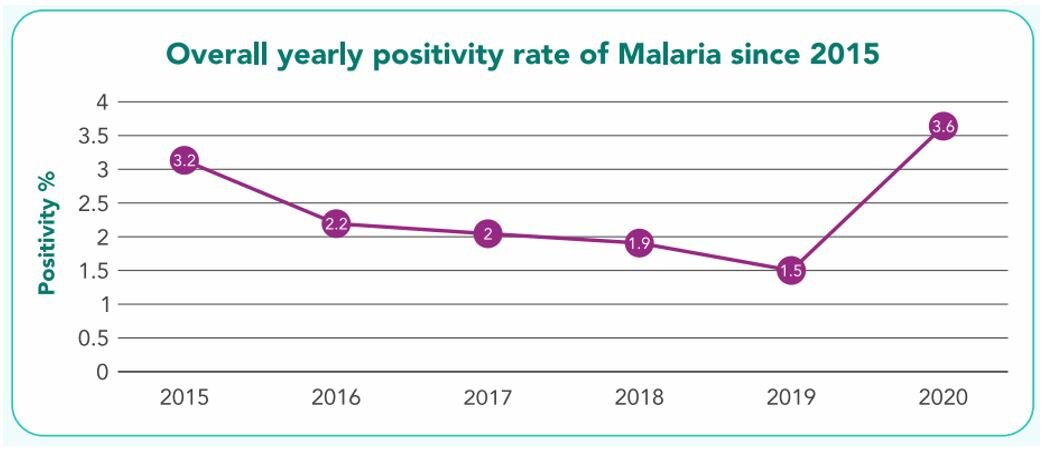Analyzing impact of pandemic on malaria trends
By Suburban Diagnostics
Malaria inflicts a great socio-economic burden on humans, accounting for 85% of worldwide infectious disease burden together with six other diseases (diarrhoea, HIV/AIDS, tuberculosis, measles, hepatitis B, and pneumonia).
The ongoing COVID-19 pandemic is the most sustained, disruptive, and lethal infectious disease outbreak since the influenza pandemic in 1918. The effect of the pandemic has been seen in malaria cases as well. According to WHO data, malaria cases in India have been on a downward trend since 2000 with an estimated 83% drop between 2000 and 2019. To understand if the pandemic has affected the malaria trends, we conducted an analysis of all malaria tests done at Suburban Diagnostics over the past 6 years.
Burden of Malaria in Maharashtra & Goa
Since 2015, there have been 2.25+ lac samples of malaria smears and rapid malaria antigen tests from Maharashtra & Goa. Though the positivity rate has been trending downwards since 2015, it spiked in 2020 during the pandemic, especially towards August 2020 (Figure 1 and 2).
Changing trends
As per our analysis, the overall positivity rate of P. vivax spiked in 2020, whereas for P. falciparum, it stayed the same. Whereas mixed infections have shown a consistent downward trend since 2015 (Figure 3).
Moreover, our in-house study discovered peaks of malaria positivity rates for P. vivax in August 2020 and for P. falciparum in December 2020 (Figure 4).
As can be seen from figures 3 & 4, the percentage positivity of malaria cases have shown a rising trend over the past few months corresponding with the monsoons in August 2020.
Take home message
Our data is concordant with the figures of the Maharashtra government which reported a 22% increase in malaria cases in the past year. Civic officials have attributed the spike in malaria cases in 2020 to a delay in the monsoon and a lack of extensive pest control exercises in open areas due to the COVID-19 pandemic. A similar rise has been observed in other malaria endemic areas like Sub-Saharan Africa, where it has been attributed to funding shortfalls and disruptions to prevention and treatment programs due to the pandemic.
As it stands, we have to remain vigilant and remember that malaria has been here long before COVID-19 and will remain long after.
References
1. Murray CJL, Lopez AD. Evidence-based health policy—lessons from the Global Burden of Disease Study. Science. 1996;274:740–743.
2. Murray CJL, Lopez AD. The Global Burden of Disease 1990-2020: alternative projections of mortality and disability by cause for eight regions. Lancet. 1997;349:1498–1504.





